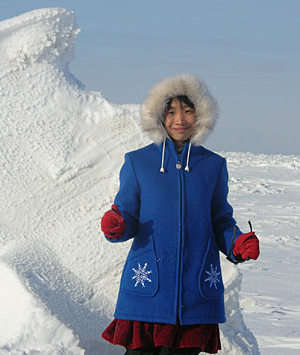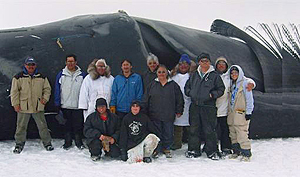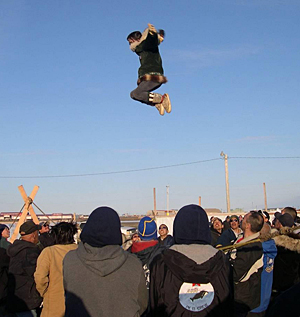

- Rozovsky wins prestigious NSF Early Career Award
- UD students meet alumni, experience 'closing bell' at NYSE
- Newark Police seek assistance in identifying suspects in robbery
- Rivlin says bipartisan budget action, stronger budget rules key to reversing debt
- Stink bugs shouldn't pose problem until late summer
- Gao to honor Placido Domingo in Washington performance
- Adopt-A-Highway project keeps Lewes road clean
- WVUD's Radiothon fundraiser runs April 1-10
- W.D. Snodgrass Symposium to honor Pulitzer winner
- New guide helps cancer patients manage symptoms
- UD in the News, March 25, 2011
- For the Record, March 25, 2011
- Public opinion expert discusses world views of U.S. in Global Agenda series
- Congressional delegation, dean laud Center for Community Research and Service program
- Center for Political Communication sets symposium on politics, entertainment
- Students work to raise funds, awareness of domestic violence
- Equestrian team wins regional championship in Western riding
- Markell, Harker stress importance of agriculture to Delaware's economy
- Carol A. Ammon MBA Case Competition winners announced
- Prof presents blood-clotting studies at Gordon Research Conference
- Sexual Assault Awareness Month events, programs announced
- Stay connected with Sea Grant, CEOE e-newsletter
- A message to UD regarding the tragedy in Japan
- More News >>
- March 31-May 14: REP stages Neil Simon's 'The Good Doctor'
- April 2: Newark plans annual 'wine and dine'
- April 5: Expert perspective on U.S. health care
- April 5: Comedian Ace Guillen to visit Scrounge
- April 6, May 4: School of Nursing sponsors research lecture series
- April 6-May 4: Confucius Institute presents Chinese Film Series on Wednesdays
- April 6: IPCC's Pachauri to discuss sustainable development in DENIN Dialogue Series
- April 7: 'WVUDstock' radiothon concert announced
- April 8: English Language Institute presents 'Arts in Translation'
- April 9: Green and Healthy Living Expo planned at The Bob
- April 9: Center for Political Communication to host Onion editor
- April 10: Alumni Easter Egg-stravaganza planned
- April 11: CDS session to focus on visual assistive technologies
- April 12: T.J. Stiles to speak at UDLA annual dinner
- April 15, 16: Annual UD push lawnmower tune-up scheduled
- April 15, 16: Master Players series presents iMusic 4, China Magpie
- April 15, 16: Delaware Symphony, UD chorus to perform Mahler work
- April 18: Former NFL Coach Bill Cowher featured in UD Speaks
- April 21-24: Sesame Street Live brings Elmo and friends to The Bob
- April 30: Save the date for Ag Day 2011 at UD
- April 30: Symposium to consider 'Frontiers at the Chemistry-Biology Interface'
- April 30-May 1: Relay for Life set at Delaware Field House
- May 4: Delaware Membrane Protein Symposium announced
- May 5: Northwestern University's Leon Keer to deliver Kerr lecture
- May 7: Women's volleyball team to host second annual Spring Fling
- Through May 3: SPPA announces speakers for 10th annual lecture series
- Through May 4: Global Agenda sees U.S. through others' eyes; World Bank president to speak
- Through May 4: 'Research on Race, Ethnicity, Culture' topic of series
- Through May 9: Black American Studies announces lecture series
- Through May 11: 'Challenges in Jewish Culture' lecture series announced
- Through May 11: Area Studies research featured in speaker series
- Through June 5: 'Andy Warhol: Behind the Camera' on view in Old College Gallery
- Through July 15: 'Bodyscapes' on view at Mechanical Hall Gallery
- More What's Happening >>
- UD calendar >>
- Middle States evaluation team on campus April 5
- Phipps named HR Liaison of the Quarter
- Senior wins iPad for participating in assessment study
- April 19: Procurement Services schedules information sessions
- UD Bookstore announces spring break hours
- HealthyU Wellness Program encourages employees to 'Step into Spring'
- April 8-29: Faculty roundtable series considers student engagement
- GRE is changing; learn more at April 15 info session
- April 30: UD Evening with Blue Rocks set for employees
- Morris Library to be open 24/7 during final exams
- More Campus FYI >>
Editor's note: A podcast of the presentation is available at this Web site.
4:17 p.m., March 24, 2009----When Chie Sakakibara was considering topics for her doctoral dissertation in cultural geography, her adviser challenged her to think of the “true voices of the land today” and what they are most concerned about.
Sakakibara decided to focus on the northernmost residents of the United States -- the Iñupiaq people of Alaska, whose culture based on the bowhead whale is changing due to global warming.
Sakakibara, who conducted fieldwork from 2004-2008 in Barrow and Point Hope, Alaska, some 360 miles above the Arctic Circle, shared her research during a public lecture on Friday, March 20, at the University of Delaware.
The lecture, which marked the world's “Oceans and Marine Life Polar Day,” was the latest offering in UD's William S. Carlson International Polar Year Events. It was co-sponsored by the College of Marine and Earth Studies and the Department of Geography.
Growing up in Japan, Sakakibara enjoyed watching American westerns on TV. However, when she saw the film Dances with Wolves, she said her “young mind became confused.” The Native Americans portrayed in this movie were very different from those she had seen on TV before.
Their language sounded Asian. They had a strong spiritual connection to, and respect for, animals just as the Japanese do. Before a meal, Sakakibara noted, the Japanese thank the animal “for giving your life for us, for letting us survive another day.”
Moreover, the people looked familiar, like her grandmother. “Why do we look like Native Americans, and why do they look like us?” she asked herself.
The film was so important to the young Japanese student and raised so many questions she wanted to explore that she wrote to Michael Blake, author of the screenplay, who suggested that she come to the United States to study.
Sakakibara enrolled at Oklahoma State University, where she earned her bachelor's degree in Native American studies, master's degree in art history, and doctorate in geography. Currently, she is a postdoctoral researcher at Columbia University's Earth Institute, where in addition to her studies, she is collaborating with the Center for Ethnomusicology on the Iñupiaq music heritage repatriation project.
'Cetaceousness' a state of mind
The bowhead whale is central to Iñupiat life. Almost every social event has a connection to the marine mammal. In fact, Sakakibara coined the term “cetaceousness” to describe the Iñupiat state of mind.
Whale hunting is a time-honored tradition of the Inupiaq people, steeped in deep respect for the bowhead whale. Illustrations of whales decorate Bibles, and whale jawbones mark the graves in Point Hope cemetery.
The whale hunt is conducted by men in an umiak, a wooden boat without a motor, which is covered with seal skins for waterproofing and to move quietly in the water.
When a whale is harvested, the hunters say a prayer and call the village to alert them. Once the whale is brought to the village, towed by snowmobiles, children are put on top of the whale, to connect to them to this important animal in their lives, Sakakibara said. A feast honoring the whale also is held after the hunt.
All the meat and fat from the whale is given away. It is never sold, she noted.
“You have to serve the community. In return, you earn the respect of the community,” she noted.
At the end of the feast, a blanket toss is held, with the whaling captain and his family tossed in the air first.
With the rapidly changing climate in the Arctic, there is concern that these traditions will be lost. Unpredictable sea-ice cover coupled with disrupted wildlife migration patterns theaten the Iñupiat way of life, Sakakibara said. The bowhead whale is so well-insulated that it sustains very little heat loss in the frigid waters of the Arctic and may take a more northerly route in the future, out of the range of the Iñupiaq people, she noted.
More than 70 percent of the ancestral home of the Iñupiaq people is now underwater, according to Sakakibara. In the 1970s, the old town was moved two miles to escape the rising sea. Although their homeland is disappearing, the Iñupiaq people are working to shore up their heritage.
“They are going through a very hard time, but at same time they are working hard to strengthen their relationship with the whale,” she said.
Increasingly, she noted, the Iñupiaq are tuning into the mind of the whales with music--through traditional drumming (with a whale stomach used for the drum's membrane), singing, and other performance arts.
“The music brought by the whales is now being returned to them,” Sakakibara said.
Article by Tracey Bryant
Photos courtesy of Chie Sakakibara



